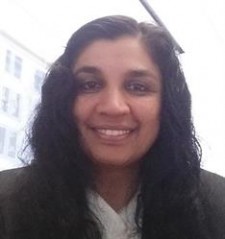
Online, November 12, 2015 (Newswire.com) - NEW YORK, NY - As banks struggle to keep pace with regulatory updates while meeting capital requirements, there is a great desire to improve efficiencies so more focus can be placed on growth and profitability. Regulators have made it clear that risk management should be the centerpiece of banks' strategic business plans, and many institutions are transitioning their processes to reflect this mindset.
Aruna Joshi, SVP, Model Risk Management at Bank of the West, recently spoke with marcus evans about some of the capital planning topics to be discussed at the 10th Capital Allocation & Stress Testing Conference:
What steps can be taken in the documentation process to reduce redundancy between model developers and valuators?
AJ: At Bank of the West, the model risk management group has developed a model development template (by incorporating feedback from model developers) that includes all the sections required for the validation team to assess the model effectively.
How do you communicate with developers for the purpose of receiving clear and concise documentation?
AJ: In addition to the model development template, we have model development and maintenance standards (MDAMS) which are closely aligned with SR 11-7 but go into much more detail and give examples. Currently we have separate standards for forecasting and scorecard models. We are also developing standards for AML type of models. Using the documentation template and MDAMS together, developers have a clear idea of what the validation team will review.
What type of governance system do you have in place at Bank of the West to improve the working relationship between model developers and valuators?
AJ: During the course of validation, validators are in constant communication with the development team. At the end of validation, both teams agree upon the findings, their ratings and the target due dates for response. For all high risk models, these findings are approved by the model risk management committee. If there are any disagreements between the development and validation team, the disagreement is escalated to the MRMC for resolution.
What are the positive effects automated systems have on the modeling process?
AJ: Automated systems such as FICO ModelBuilder or Xeno, are user-friendly software packages widely used for scorecard model development. They can capture nonlinear relationships between dependent and independent variables without the need of using transformation functions. They address outliers and missing values in the predictive variables. Due to the tailored analytic routines and reports, they reduce variability from one analyst to the other and offer easy deployment. Drawbacks are that the underlying routines are less transparent and thus harder to validate.
How do you use model & scenario analyses to reduce potential risks?
AJ: Any model has to undergo thorough back-testing and sensitivity analysis. Using scenario analysis that uses extreme boundary conditions can test the robustness of the model. When a model is tested on extreme conditions and does not break, that gives confidence that the model can withstand supervisory scenarios.
Why is it difficult to align risk management with corporate strategy?
AJ: The goal of risk management is not to eliminate risk but to maximize risk-adjusted return. Hence, risk management largely focuses on mitigating risk where as corporate strategy is more likely to focus on growth which is likely to increase risk. There is a delicate balance between risk management and corporate strategy.
Aruna Joshi, PhD, FRM is currently Senior Vice President in the Model Risk Management Group at Bank of the West where she is responsible for overseeing validations of CCAR and BAU models related to credit risk. She was previously with Wells Fargo and Union Bank. She was the Director of Risk Modeling at PMI Mortgage Insurance Company prior to entering the banking field. She has co-authored a paper related to measuring model risk that was published in the Risk Management Association Journal. She has an MFE and PhD from UC Berkeley, an MS from Iowa State University and a B.Tech. from IIT Bombay, India.
Join Aruna at the 10thCapital Allocation & Stress Testing Conference, February 24-25, 2016 in New York City, NY. For more information, take a look at the conference agenda or contact Tyler Kelch, Digital Marketing Manager, marcus evans at 312.894.6310 or Tylerke@marcusevansch.com.
About marcus evans
Marcus evans conferences annually produce over 2,000 high quality events designed to provide key strategic business information, best practice and networking opportunities for senior industry decision-makers. Our global reach is utilized to attract over 30,000 speakers annually; ensuring niche focused subject matter presented directly by practitioners and a diversity of information to assist our clients in adopting best practice in all business disciplines.
Image Available: www.marketwire.com/library/MwGo/2015/11/13/11G071980/Images/AJ_2-0386cd3ea7df8fdbb6ad7df806d33e59.jpg
Source URL: http://www.marketwired.com/mw/release.do?id=2073600&sourceType=3
Share:
